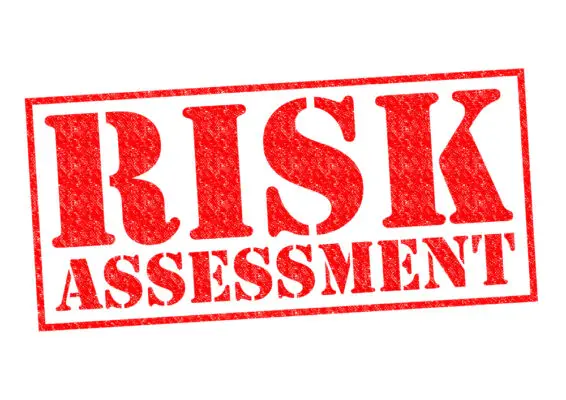Information security risk assessment is a crucial process in safeguarding sensitive information and ensuring the continuity of business operations. It involves identifying potential threats, assessing their likelihood and impact, and implementing appropriate controls to mitigate the identified risks.
This article provides a comprehensive understanding of the definition of information security risk assessment.
The importance of information security risk assessment cannot be overstated. With the increasing complexity and sophistication of cyber threats, organizations must proactively identify vulnerabilities and evaluate potential impacts on their assets.
Organizations can allocate resources to protect their critical assets while maintaining an acceptable level of risk by conducting a thorough risk assessment.
This article outlines the steps in conducting a risk assessment, including identifying assets, assessing threats and vulnerabilities, evaluating risks, and developing mitigation strategies.
Additionally, it highlights the benefits of conducting a risk assessment, such as improved decision-making processes, enhanced regulatory compliance, and increased stakeholder confidence.
Despite its significance, an effective information security risk assessment can present several challenges, such as limited resources or lack of expertise. Therefore, this article discusses best practices for overcoming these challenges to ensure successful risk assessments.
In conclusion, this article aims to provide readers with a comprehensive understanding of information security risk assessment by defining its key aspects and highlighting its importance in today’s digital landscape.
Organizations can effectively manage risks associated with their valuable information assets by following the best practices outlined in this article.
Importance of Information Security Risk Assessment
The importance of information security risk assessment is its ability to identify and evaluate potential vulnerabilities within an organization’s systems, enabling effective mitigation strategies to be implemented.
Stakeholders play a crucial role in this process by providing expertise and insights, contributing to a comprehensive understanding of the risks involved.
Their involvement ensures that all relevant areas are assessed, including technical, operational, and organizational aspects.
Furthermore, emerging information security risk assessment trends must be considered to keep up with the ever-evolving threat landscape.
These trends encompass technological advancements, such as cloud computing and mobile devices, which introduce new vulnerabilities that must be addressed.
Additionally, the growing complexity of cyber-attacks necessitates continuous monitoring and evaluation of risks to maintain robust security measures.
Information security risk assessment is vital for organizations to proactively manage potential threats and safeguard their valuable assets from malicious actors.

Steps in Conducting a Risk Assessment
To successfully conduct a risk assessment, it is crucial to follow a systematic approach that involves several distinct steps. The risk assessment process typically includes the following steps:
- Identify assets: This step involves identifying and categorizing the assets within an organization that needs protection, such as data, systems, and physical resources.
- Identify threats: In this step, potential threats to these assets are identified and analyzed. This can include natural disasters, human errors, or malicious attacks.
- Assess vulnerabilities: Once the threats are identified, vulnerabilities in the system are assessed to determine how susceptible the assets are to these threats.
- Analyze impact: The next step is to analyze the potential impact if a threat exploits a vulnerability. This helps prioritize risks based on their potential consequences.
- Evaluate likelihood: Each threat’s occurrence is evaluated using historical data, industry trends, and expert opinions.
- Calculate risk level: By combining the likelihood and impact assessments, a risk level can be calculated for each identified risk.
Organizations can effectively identify and prioritize potential risks by following these steps in conducting risk assessments. This allows them to implement appropriate controls to mitigate the identified risks.
Benefits of Conducting a Risk Assessment
Conducting a thorough analysis of potential hazards and vulnerabilities can provide organizations with valuable insights into areas that require enhanced protective measures. The benefits of conducting a risk assessment are numerous.
Firstly, it allows organizations to identify and prioritize risks based on their likelihood and potential impact. This enables them to allocate resources effectively and efficiently, focusing on the most critical areas.
Secondly, a risk assessment helps organizations understand the potential consequences of identified risks, enabling them to develop appropriate mitigation strategies.
Organizations can make informed decisions regarding investments in security controls and preventive measures by acknowledging the possible consequences of risks.
Additionally, conducting regular risk assessments facilitates ongoing monitoring and management of risks, ensuring that protective measures remain effective over time.
Organizations can thoroughly comprehend their security status and proactively address potential vulnerabilities by conducting risk assessments. This helps prevent any exploitation of vulnerabilities.

Common Challenges in Risk Assessment
A critical aspect of the risk assessment process involves navigating through various complexities and obstacles, including limited resources, lack of expertise, and diverse organizational structures.
Conducting a comprehensive risk assessment requires careful consideration of multiple factors and the application of effective methodologies and tools.
One common challenge in risk assessment is selecting and implementing appropriate methodologies. Organizations have different needs, goals, and environments, necessitating using tailored approaches to effectively assess risks.
Several established methodologies are available, such as qualitative, quantitative, or hybrid approaches. Each methodology has its strengths and weaknesses regarding accuracy, scalability, complexity, and resource requirements.
Another challenge is the availability and utilization of suitable risk assessment tools. These tools facilitate data gathering, analysis, evaluation, monitoring, and reporting processes in a consistent manner.
However, organizations may face difficulties choosing the right tool that aligns with their specific requirements while considering factors like cost-effectiveness and ease of use.
A successful risk assessment involves understanding the complexities associated with limited resources, lack of expertise, and diverse organizational structures while selecting appropriate methodologies and utilizing suitable risk assessment tools.
| Challenges | Risk Assessment Methodologies | Risk Assessment Tools |
|---|---|---|
| Limited resources | Qualitative | Spreadsheets |
| Lack of expertise | Quantitative | Software solutions |
| Diverse organizational structures | Hybrid | Cloud-based platforms |
Best Practices for Effective Information Security Risk Assessment
Efficiency and accuracy in evaluating potential vulnerabilities and safeguarding sensitive data rely on establishing best practices for evaluating and mitigating potential risks to information systems.
To ensure an effective information security risk assessment, organizations should consider the following best practices:
- Use comprehensive risk assessment tools: Utilize specialized software or platforms that can automate identifying, quantifying, and prioritizing risks. These tools can streamline the assessment process and provide more accurate results.
- Follow a standardized risk assessment framework: Adopt a recognized framework such as ISO 27001 or NIST SP 800-30 to guide the risk assessment process. These frameworks provide a systematic approach and help ensure consistency across assessments.
- Involve relevant stakeholders: Engage key stakeholders from various departments within the organization, including IT, legal, compliance, and management. Their input will help identify potential risks from different perspectives.
- Regularly update and review assessments: Risks evolve, so it is crucial to regularly update and review your assessments to account for changes in technology, threats landscape, regulatory requirements, or business operations.
Organizations can improve their cybersecurity posture by following this information security risk assessment best practices.
This includes identifying vulnerabilities, prioritizing mitigation efforts, and ensuring effective implementation.
Frequently Asked Questions
What are the different types of information security risks that can be assessed?
Information security risks that can be assessed include external threats (e.g., hackers, malware), internal threats (e.g., employee negligence, unauthorized access), and physical risks (e.g., natural disasters). Assessing these risks is important to protect sensitive information and prevent potential breaches.
How often should an organization conduct an information security risk assessment?
The frequency at which an organization should conduct an information security risk assessment depends on maintaining a secure environment.
Regular assessments are necessary to identify vulnerabilities, mitigate risks, and protect against potential threats.
What are the key components of an effective risk assessment framework?
The key components of an effective risk assessment framework include identifying and evaluating risks, establishing risk criteria, implementing risk mitigation measures, and monitoring and reviewing to ensure ongoing effectiveness.
How does the size and complexity of an organization impact the risk assessment process?
The size and complexity of an organization impact the risk assessment process by requiring more extensive data gathering, analysis, and evaluation.
Different risk assessment methodologies may need to be employed to assess risks across all organizational structures effectively.
What are some potential consequences of not conducting regular information security risk assessments?
Not conducting regular information security risk assessments can negatively impact an organization.
It can lead to increased vulnerability to cyber threats, potential data breaches, financial losses, damage to reputation, and legal implications for non-compliance with regulations.

Conclusion
It is imperative that organizations carry out an information security risk assessment to detect and tackle potential risks. By adhering to the steps delineated in this article, organizations can precisely evaluate their vulnerabilities and enforce suitable measures to alleviate them.
The benefits of conducting a risk assessment include improved decision-making, resource allocation, and compliance with regulatory requirements.
However, addressing common challenges such as data collection and analysis is essential to ensure accuracy.
Implementing best practices can help organizations improve their information security and defend against threats.

Chris Ekai is a Risk Management expert with over 10 years of experience in the field. He has a Master’s(MSc) degree in Risk Management from University of Portsmouth and is a CPA and Finance professional. He currently works as a Content Manager at Risk Publishing, writing about Enterprise Risk Management, Business Continuity Management and Project Management.

